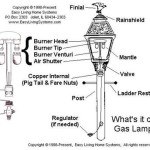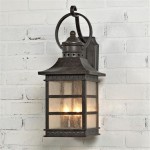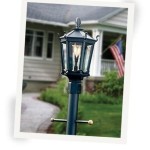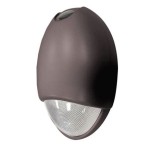Outdoor Lighting Examples: Illuminating Your Spaces
Outdoor lighting plays a vital role in enhancing the aesthetics, safety, and functionality of various spaces. From residential gardens to commercial properties, careful lighting design can transform the ambiance and improve visibility. This article explores a range of outdoor lighting examples, highlighting different applications and techniques.
Path Lighting
Path lighting provides safe passage along walkways and driveways while adding a touch of elegance to the landscape. Low-voltage lights placed strategically along the path illuminate the way, preventing trips and falls. Various styles, including mushroom lights, bollard lights, and recessed ground lights, offer different aesthetic options. Choosing fixtures that complement the surrounding architecture and landscape is crucial for a cohesive design.
Deck and Patio Lighting
Decks and patios are popular outdoor living spaces, and appropriate lighting extends their usability into the evening hours. String lights create a festive atmosphere, while recessed lights in the deck surface offer a sleek, modern look. Post lights provide ambient illumination, and wall-mounted sconces add a decorative touch. Consider using dimmable lights to create different moods for various occasions. Integrating lighting with a smart home system allows for convenient control and automation.
Security Lighting
Security lighting serves as a deterrent to intruders and enhances safety around the perimeter of a property. Motion-activated floodlights provide bright illumination when movement is detected, while dusk-to-dawn lights offer continuous lighting throughout the night. Strategically placed lights eliminate dark corners and blind spots, making it more difficult for intruders to approach unnoticed. Installing security cameras with integrated lighting further enhances surveillance capabilities. Opting for energy-efficient LED lights can reduce long-term operating costs.
Landscape Lighting
Landscape lighting highlights the beauty of gardens, trees, and architectural features. Uplighting creates dramatic effects by illuminating trees or structures from below, while downlighting casts a soft glow from above. Spotlights can be used to accentuate specific plants or statues. Properly placed landscape lighting adds depth and dimension to the outdoor space, creating visual interest. Low-voltage LED lights are a popular choice for landscape lighting due to their energy efficiency and long lifespan.
Pool and Water Feature Lighting
Lighting around pools and water features enhances safety and creates a mesmerizing ambiance. Submersible LED lights add a vibrant touch to the water, while strategically placed lights around the pool deck provide safe navigation. Fiber optic lighting offers dynamic color-changing effects, transforming the pool area into a captivating spectacle. Ensuring all fixtures are waterproof and meet safety standards is paramount for pool lighting. Consider incorporating lighting controls to adjust brightness and color schemes for different occasions.
Facade Lighting
Facade lighting enhances the architectural features of a building, highlighting its unique design elements. Uplighting, downlighting, and wall-washing techniques can be used to create different effects. Accentuating architectural details such as columns, arches, and textures adds visual interest and curb appeal. Choosing appropriate color temperatures can enhance the overall aesthetic. For commercial buildings, well-designed facade lighting can reinforce brand identity and attract attention.
Driveway Lighting
Driveway lighting provides safe access to the property and enhances curb appeal. A combination of post lights, bollard lights, and recessed ground lights can be used to illuminate the driveway. Matching the style of the driveway lighting to the overall architectural theme of the house creates a cohesive look. Consider using lights with motion sensors for added convenience and energy efficiency. Adequate lighting along the driveway improves visibility for both drivers and pedestrians.
Garden Lighting
Garden lighting adds a magical touch to outdoor spaces, highlighting the beauty of plants and flowers. Solar-powered lights offer an eco-friendly option for illuminating pathways and flowerbeds. String lights can be draped over trees or pergolas to create a whimsical atmosphere. Consider using a variety of lighting techniques, such as uplighting, downlighting, and silhouetting, to create visual interest. Selecting fixtures that blend seamlessly with the garden's design enhances the overall aesthetic.
Sports Court Lighting
For those with outdoor sports courts, adequate lighting is essential for safe and enjoyable evening games. High-intensity discharge (HID) lamps or LED floodlights provide bright, uniform illumination across the court. Properly positioned lights minimize glare and shadows, ensuring optimal visibility for players. Consider factors such as court size, type of sport, and surrounding environment when selecting lighting fixtures. Investing in energy-efficient lighting can reduce long-term operating costs for sports court illumination.

Types Of Outdoor Landscape Lighting 7 Must Have Fixtures

8 Examples Of Inspiring Landscape Lighting Turf

Outdoor Lighting Evergreen Landscape

Six Steps To Stunning Garden Lighting With Examples Led Hut

Landscape Lighting Pictures Elegant Outdoor

Designing A Landscape Lighting System Ideas Advice Lamps Plus

Good Vs Bad Lighting Outdoor Examples

Designing A Landscape Lighting System Ideas Advice Lamps Plus

Outdoor Lighting Can Make Your Home Look Great And Allows You To Use Enjoy Yard Patio Or Pool At Night See Examples A Lawn Care Landscaping

Down Wall Light Outdoor Lighting Led Factory
Related Posts







